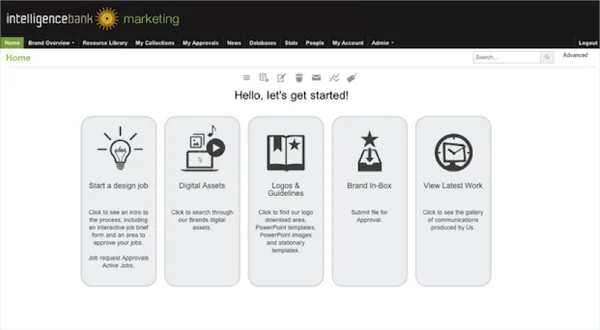Why you need a Digital Asset Management platform
/A creative file can’t be a brand asset if it’s hard to find. Shared drives, dropbox and storing images on desktops leads to huge inefficiencies and lack of control over the creative process.
You spend a lot of time, effort and money creating your marketing content but locating the right file can be a mess, especially if there are multiple versions of the same file stored in different folders or on different devices. That’s where a digital asset management (DAM) system comes in.
DAM software provides a central place for your files to be stored and accessed by your team. But it’s not just about storing an image in the cloud – any cloud service can do that. A digital asset management platform has specific capabilities, designed for marketers, to ingest all types of digital files, manage metadata, create approval workflows and enable you to seamlessly share and integrate files into third party systems.
Here are some of the signs you are ready for a DAM
Approval processes are driving you crazy
Stop wasting valuable time on long email exchanges between various parties. You can slash your production time in half literally by making collaboration simple, clear and streamlined. Automated workflows ensure email updates are sent out when new files are uploaded. From there you can easily annotate or mark up images to leave your comments in a conversation stream. You also have the ability to create conversation threads on the file so that everyone can track what needs to be done at all times.
Your version control is out of control
When you have a shared drive with files named “final final sales presentation” - working out the correct file to use can be time consuming and having someone use the wrong file can be costly. DAM software platforms that incorporate version control make the risk of having the wrong file obsolete. Version control allows you to make the most recent version the default download eliminating the chance of the wrong file being used – but as the administrator – you can go back in history and see previous versions.
You need your team to stay on brand
Here’s a mystery of the galaxy – all of your different agencies, marketing managers, partners and other stakeholders all have copies of your brand guidelines and your brand values – but you are constantly having to monitor the work of others to ensure creative is on brand and is compliant. The issue here is – people don’t read. That’s right – we’ve said it. So in addition to uploading your brand guideline PDF’s along side your digital assets – we highly recommend creating custom brand guideline pages within your DAM to bring your guidelines and values to life. This way – you can demonstrate why stretching a logo is bad news for brand consistency – and you can also demonstrate what you mean by expressing a brand guideline – such as “Trust” – which may be hard for some to grasp. A DAM with brand guideline pages is often referred to as a Brand Hub – here you can check out the differences in features.
You keep sending the same logo out to the same people – over and over
While people who keep asking you for the same logo back or digital files may not agree – you have better things to do all day than to keep sending the same people the same files because they either aren’t organised enough to have the right versions – or they are frankly just lazy. One of the great features of a DAM is the ability to mails links to files (to registered and non registered users) – which in time – gets people to self serve. This basically frees up your time so you can spend more hours doing strategic projects, vs. admin.
You need to control who has access to what
It’s always quite tragic when you see stakeholders doing their own creative work – simply because they have access to high res artwork and they believe they have a creative flair – and don’t need to go through the marketing process. As a result – offices are filled with cringe-worthy power points, and internal posters, trade advertising and even direct emails with stretched images, the wrong font and even a new colour scheme. In other words – hell on earth for marketers. By using a DAM software system – you can give preview access to everyone – so they can actually see what’s there and go through your process to produce work – but your marketing team can only have access to download the images and creative content – to ensure quality.
You need to publish your creative – instantly
The extra efficiency you get from using DAM means your assets will be available quicker and you can get more value from them. DAM platforms allow you to embed your assets directly into your content management system and social media, so once your assets are ready to go they can be distributed instantly, in an integrated way, across multiple platforms. DAM’s usually have API’s and connectors into CMS platforms, to make the DAM to web interface platform seamless.
You need analytics on your creative content
If you’re finding it hard to keep track of where and how your assets are being used – your DAM can help. You can generate detailed usage reports, which make keeping track of your assets a breeze. DAM usage reports can be used to easily determine which of your assets are being overused and identify assets that are being neglected so they can be leveraged to get greater value.


